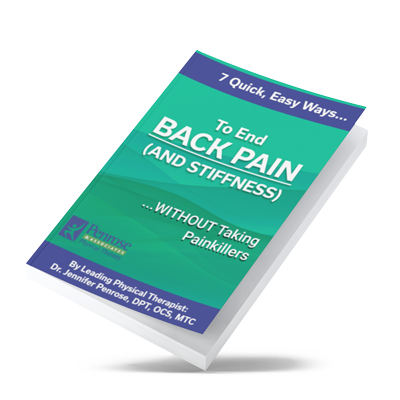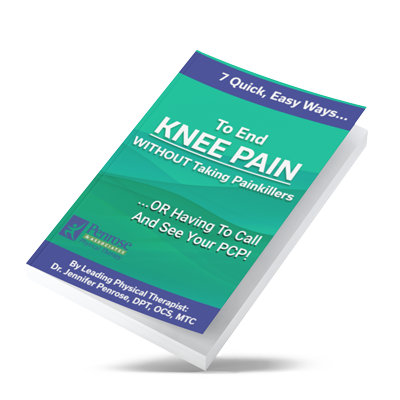Shoulder discomfort is a common issue that many of us experience at some point in our lives. Whether it’s from poor posture, repetitive movements, an injury, or just the natural wear and tear of daily life, the impact of shoulder pain can significantly affect your ability to perform everyday activities and enjoy life to its fullest. If you’re struggling with this, you’re not alone—millions of people deal with shoulder discomfort every day.
But here’s the good news: you don’t have to live with shoulder discomfort forever. With the right approach, you can find relief and regain your strength. In this blog, I’m going to share effective exercises for shoulder discomfort that can help alleviate your pain, improve mobility, and strengthen your shoulder muscles for better overall function.
Why Does Shoulder Discomfort Occur?
Before diving into the exercises, it’s important to understand what might be causing your shoulder discomfort. Common causes of shoulder pain include:
- Poor Posture: Slouching or hunching over can put undue pressure on your shoulders, causing discomfort over time.
- Repetitive Motion: Jobs or activities that require repetitive arm movements can lead to strain in the shoulder muscles, ligaments, and tendons.
- Shoulder Injuries: A direct injury, such as a fall or an accident, can result in sprains, strains, or tears in the shoulder joint or muscles.
- Arthritis: Over time, the cartilage in the shoulder joint can wear down, leading to pain and limited mobility.
- Frozen Shoulder: This condition involves stiffness and pain in the shoulder joint, making it difficult to move the arm freely.
No matter the cause, effective exercises for shoulder discomfort can be a game-changer. The right exercises not only help reduce pain but also improve the range of motion and restore function.
5 Effective Exercises for Shoulder Discomfort
If you’re tired of feeling limited by shoulder discomfort, try incorporating these effective exercises for shoulder discomfort into your routine. These moves are designed to gently stretch, strengthen, and improve mobility, allowing you to reduce pain and increase shoulder strength.
1. Pendulum Swings
Pendulum swings are a great exercise to relieve shoulder discomfort by gently moving the joint and stretching it without overexerting it.
How to Do It:
- Stand with your feet shoulder-width apart and lean forward slightly.
- Allow your arm to hang down, relaxed.
- Gently swing your arm in small circles—start with small movements and gradually make the circles bigger.
- Perform 10-15 swings in each direction for about 1-2 minutes.
This simple exercise helps to improve blood flow to the shoulder and relax the muscles surrounding the joint, providing relief from discomfort.
2. Shoulder Rolls
Shoulder rolls are an excellent way to relieve tightness and reduce shoulder discomfort caused by poor posture or tension in the upper back and shoulders.
How to Do It:
- Stand up straight or sit tall with your shoulders relaxed.
- Slowly roll your shoulders forward in a circular motion, making big circles.
- After 10-15 rolls, switch the direction and roll your shoulders backward.
- Perform this exercise for 1-2 minutes.
This exercise helps release muscle tension in the shoulders and neck while improving mobility, making it an ideal movement to incorporate into your daily routine.
3. Wall Angels
Wall angels are a powerful exercise to improve shoulder mobility, posture, and strengthen the upper back and shoulder muscles. It targets the shoulder blades and helps reverse the effects of poor posture, a common cause of shoulder discomfort.
How to Do It:
- Stand with your back against a wall, with your feet about 6 inches away from it.
- Press your lower back, upper back, and head against the wall.
- Raise your arms so that your elbows are at 90 degrees, and your forearms are flat against the wall.
- Slowly slide your arms up the wall as high as you can while maintaining contact with the wall.
- Lower your arms back down to the starting position.
- Perform 10-15 repetitions.
Wall angels are great for restoring shoulder mobility and improving posture, both of which help reduce shoulder discomfort over time.
4. Doorway Stretch
If your shoulders feel tight and stiff, the doorway stretch is one of the most effective exercises for shoulder discomfort. This stretch opens up the chest and helps release tension in the shoulder muscles.
How to Do It:
- Stand in a doorway with your forearms resting against the door frame.
- Step forward with one foot and lean your body weight into the doorway, feeling a stretch across your chest and shoulders.
- Hold for 15-30 seconds and repeat 3-5 times.
- Make sure not to overstretch—just a gentle stretch is enough to feel the benefits.
This stretch helps open up the chest and shoulders, relieving discomfort and improving flexibility in the shoulder joint.
5. External Rotation with Resistance Band
This exercise strengthens the rotator cuff muscles, which are essential for shoulder stability and preventing discomfort. By strengthening these muscles, you’ll improve shoulder function and prevent future injury.
How to Do It:
- Attach a resistance band to a stationary object at waist height.
- Stand with your feet shoulder-width apart, holding the band with your elbow bent at a 90-degree angle.
- Keep your elbow close to your side and rotate your forearm away from your body.
- Slowly return to the starting position and repeat for 10-15 repetitions on each side.
- Perform 2-3 sets.
By strengthening the muscles around your shoulder joint, you can reduce discomfort and improve your overall shoulder health.
Why Exercise is Key to Shoulder Discomfort Relief
Incorporating effective exercises for shoulder discomfort into your routine isn’t just about feeling better in the moment—it’s about long-term relief and improved mobility. Regular exercise helps:
- Improve posture: Correcting postural imbalances that contribute to shoulder discomfort.
- Increase strength: Strengthening the muscles around your shoulder joint improves stability and reduces the likelihood of injury.
- Reduce tension: Relieving tight muscles through stretches and mobility exercises alleviates discomfort and enhances mobility.
- Enhance flexibility: Increasing the range of motion in your shoulders helps you perform daily tasks with less discomfort.
When to Seek Professional Help
While exercises can help alleviate shoulder discomfort, there are times when you may need professional assistance. If you’ve been dealing with shoulder discomfort for a prolonged period or if you’re experiencing sharp pain, weakness, or limited mobility, it’s time to reach out to a physical therapist.
A physical therapist can assess your condition, develop a personalized treatment plan, and provide hands-on care to ensure you’re on the path to recovery.
Take Action Today: Book Your Free Discovery Visit
If shoulder discomfort is holding you back from enjoying your life or performing daily activities, don’t wait any longer to take action. Whether you’re looking for exercises, stretches, or a comprehensive treatment plan, we’re here to help!
I invite you to book your free discovery visit today. During this session, we’ll discuss your symptoms, evaluate your shoulder mobility, and determine the best course of action to relieve your discomfort and improve your overall shoulder health.
Call us at (360) 456-1444 or click here to schedule your free discovery visit. Let’s work together to say goodbye to shoulder discomfort and hello to a stronger, more mobile you!
More Free Resources:
Top 5 Stretches for Neck and Shoulder Pain Relief You Can Do at Home – Penrose Physical Therapy
Ever Wonder Why Your Shoulder Aches When You Didn’t Do Anything? – Penrose Physical Therapy
Could Your Lifestyle Be Making Your Shoulder Pain Worse? – Penrose Physical Therapy






